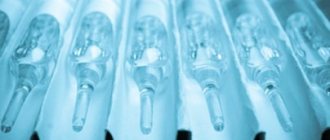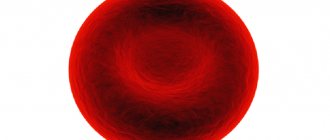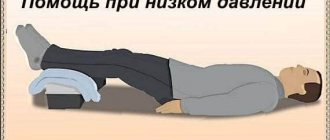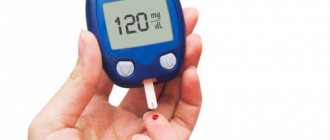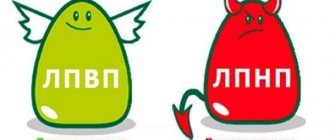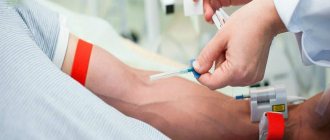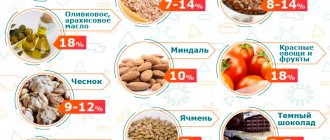Hemoglobin plays an important role in the body by providing oxygen to tissues. A deficiency of the compound greatly affects the general condition, causing weakness, dizziness and serious disturbances in the functioning of internal organs and systems.
This can even lead to death. However, it is easy to restore hemoglobin levels. So, how to increase hemoglobin at home? And independently, at home, with the help of products or folk recipes.
Read what causes elbow pain and how to treat it
Briefly about the role of hemoglobin in the body
Hemoglobin (HB) is a protein containing iron. Its main location is red blood cells, which transport the protein through the bloodstream. The purpose of hemoglobin is to provide the body with oxygen (O2) and utilize carbon dioxide (CO2). Iron-containing protein captures oxygen in the lungs and carries it to the tissues, where molecules are exchanged (O2 for CO2) and carbon dioxide moves back into the lungs for further removal from the body.
The hemoglobin level is determined by capillary blood (from a finger) as part of a general clinical analysis. In clinical hematology, protein standards are distinguished by gender and age. The accepted designation is the Latin abbreviation HB, the measurement value ) grams per liter.
For adults from 18 to 65 years of age, the standard values are 120-150 g/l in women’s blood, 140-160 g/l in men’s blood. When hemoglobin levels drop below the threshold values, the patient experiences symptoms of hypoxia (lack of oxygen). Dizziness, shortness of breath, depression of physical strength and mental abilities appear.
The main reasons for low concentrations of NV in the blood
Factors affecting blood composition can be physiological or pathological in nature. The first include:
- physical inactivity (lack of regular physical activity);
- unhealthy diet (predominance of flour dishes in the diet and deficiency of vegetables, fruits, protein products);
- distress (permanent neuropsychological tension).
Pathological causes are:
- massive bleeding (including menstrual bleeding in women);
- diseases of the digestive system, thyroid gland, kidneys;
- acute and chronic infections (including parasitic infestations, tuberculosis, syphilis, viral infections);
- cancer tumors and autoimmune diseases.
In order to prescribe effective therapy to raise hemoglobin levels, it is necessary to find out the negative factor that became the trigger (push) for changes in blood composition. To determine the cause of low hemoglobin, the patient is prescribed additional tests (blood, urine, feces) and hardware diagnostic procedures (ultrasound, X-ray, colonoscopy, FGDS, etc.).
Folk recipes
Any means, including folk remedies, will not increase hemoglobin to normal in a couple of days. Fast means at least a week or two. Even within such a period of time, a lasting and reliable result can be achieved. Traditional recipes:
- Take 200 g of chopped walnuts, buckwheat and dark honey. All ingredients are mixed and taken half an hour before breakfast (without washing down) 2 tbsp. l.
- Honey, dried apricots, raisins and chopped walnuts are taken in the same ratio. Everything is mixed and the mass should be eaten 1 tbsp. l. three times a day.
- Prunes, dried apricots, raisins and walnuts are taken. All components are crushed (to make a whole glass) and combined with ground lemon zest of two fruits and 200 g of honey. The resulting mass should be eaten three times a day, 1 tbsp. l.
- Take lemon and 5 leaves of three-year-old aloe. Before this, the plant should be in the refrigerator for three days. The components are crushed in a blender and mixed with honey until thick. It is taken 20 g, three times a day.
- A quick and good effect is achieved if you eat 2 tbsp in the morning. l. sprouted wheat, a little seasoned with honey and dried fruits.
- Freshly squeezed carrot and beet juice are mixed (they are taken in half a glass). The drink is drunk before breakfast, on an empty stomach. The result is already visible after two days.
- Mix 100 ml of cranberry and apple juices and add a quarter glass of beet juice. The drink is drunk throughout the day and shaken before drinking.
- Take 100 ml of carrot juice and mix with the same amount of boiled milk. The drink is drunk in the morning, on an empty stomach.
- Beetroot, carrot and lemon juices are taken in equal proportions. They are mixed with cognac and honey in a glass jar. It is wrapped in foil and placed in the refrigerator for three hours. Then the product is taken 1 tbsp. l. three times a day.
- In the evening, half a glass of buckwheat is ground in a blender and mixed with 200 ml of kefir. Then the product is placed in the refrigerator overnight. The swollen mass is eaten in the morning for breakfast. This porridge is considered the most effective to quickly increase hemoglobin levels.
If honey is used in recipes, dark varieties are preferable. It helps the body absorb iron better. The effect is achieved even faster by consuming juices and tinctures. They are absorbed very quickly.
Herbs that increase hemoglobin
There are many herbs that increase hemoglobin. For example, a tincture of St. John's wort, clover, white damselfly and blackberry. They are mixed and 20 g of the mixture is poured into a glass of boiling water. You need to drink it in a day. Rosehip, rowan, yarrow, red clover, and garlic give a good effect.
Infusions are made from wormwood, dandelion roots, nettle leaves and fireweed. The listed herbs can be taken in different versions, but in equal quantities. Pour boiling water over and leave for at least an hour. The products should be used every day until the hemoglobin level is restored.
Principles of treatment
Before prescribing therapeutic treatment for anemia, the doctor must determine the type of anemia and the stage of its development. Based on the characteristics of the hematological syndrome and the severity of the condition, tablets, injection solutions, and additional means for restoring hemoglobin levels are selected.
The classification of anemia by type is determined by the underlying cause of low hemoglobin levels. The main types of anemia:
How to increase the level of hemoglobin in the blood?
- Posthemorrhagic. The development is provoked by heavy blood loss (external or internal bleeding).
- Hemolytic. It is characterized by accelerated destruction of red blood cells, outstripping their production in the spleen, liver and bone marrow.
- Scarce. Includes several subspecies. Depending on the deficiency of certain substances, they distinguish: iron deficiency anemia (lack of Fe), iron refractory (deficiency of enzymes for the absorption of iron), cyanocobalamin deficiency (lack of vitamin B12), folic deficiency (lack of vitamin B9 - folic acid).
- Hypoplastic and aplastic. The most severe types of anemia caused by disturbances or a stop in the production of blood cells in the bone marrow.
Deficiency anemia is eliminated with drugs that compensate for the lack of iron and B vitamins. For hemolytic anemia, iron-containing drugs are not used, since against the background of low hemoglobin, the iron level remains normal.
In the posthemorrhagic type, the primary task is to determine the source of blood leakage, stop bleeding, and infusion-transfusion replacement of blood loss. Medicines with active Fe are added at the second stage of therapy. Aplastic and hypoplastic anemia are difficult to treat with medication; the best option in this case is blood transfusion and bone marrow transplantation.
Most patients with a low concentration of hemoglobin in the blood have deficient subtypes of anemia. When prescribing ferum (iron) preparations, it is necessary to take into account the peculiarities of the interaction of the substance with dairy products.
Casein (milk protein) tends to stick to ferum, preventing its absorption. A patient with iron deficiency anemia is prescribed a special diet. The food set should help increase the level of NV, but at the same time not contain milk and dairy products.
In addition, some drugs are based on ferric iron, while others are based on divalent iron. Both varieties are used in medical practice, but the methods of administration, dosage and treatment regimen are different. The human body is capable of high-quality absorption of only divalent Fe. With its help, you can quickly increase the level of NV in mild stage anemia. In the treatment of severe anemia, the use of trivalent Fe is recommended.
Stages of anemia
| Stage/indicators | Lightweight | Average | Heavy |
| HB | ≤ 100 g/l | from 66 to 100 g/l | ≤ 66 g/l |
| R.B.C. | up to 3.5*10^12/l | < 3*10^12/l |
Treatment of hematological syndrome is carried out under constant monitoring of blood counts. The doctor monitors the dynamics of therapy and conducts a comparative assessment of the results of all blood parameters (hemoglobin, red blood cells, platelets, leukocytes, ESR, etc.).
Important! To avoid the development of side effects, it is forbidden to self-medicate with iron-containing drugs. Medicines have a number of contraindications that cannot be ignored.
Reduced hemoglobin is restored through the use of several methods (medicines, diet therapy, rational physical activity, regular exposure to fresh air). In this case, the patient needs to reduce nicotine consumption as much as possible, give up alcoholic beverages, strong brewed coffee and tea, observe a work and rest schedule (pay special attention to proper sleep), and avoid psycho-emotional overload.
Only complex treatment gives positive results. Three main groups of medications are used in the treatment of deficiency anemia:
- Injectable and tableted iron preparations. If there is a choice, preference is given to injections, since the liquid version of the drug has higher bioavailability and fewer contraindications.
- Vitamin preparations with a high content of folic acid or cyanocobalamin (depending on the type of anemia). Medicines are available in the form of tablets and syrup. The liquid version is recommended for children and patients with hypoacid gastritis (low stomach acidity).
- Combined medications.
The prescription of a specific medication, dosage regimen and dosage are determined by a doctor (general practitioner, pediatrician, hematologist). Injections should only be performed by a medical professional.
Ferrous iron preparations
The main medications in this group:
- Ferro-Fogalmma. A combined hemostimulating agent containing ferum, folic acid, ascorbic acid and vitamin B12. Produced in the form of gelatin capsules. The course of treatment for the mild stage of anemia is one month, for the middle stage - 2-3 months, in severe cases - from 4 months. Contraindicated in iron-refractory and hemolytic anemia, chronic liver diseases. Side effects may include nausea, stool upset, heaviness in the epigastric (epigastric) region.
- Fenyuls. The composition is: ferrous sulfate, ascorbic acid, B vitamins (riboflavin B2, thiamine B1, niacin B3, pyridoxine B6, pantothenic acid B5). Available in capsules. Treatment with the drug is prescribed for a month, extended if necessary. Not used in pediatrics. Contraindications are diseases associated with abnormal accumulation of iron in the body (hemochromatosis, hemosiderosis, etc.). May have an adverse effect on the digestive system.
- Sorbifer Durules. The main active ingredients are ferum sulfate and vitamin C. It is produced in tablet form. In most cases, a three-month course of treatment is prescribed. Not used for esophageal obstruction, hemolytic anemia, or in the treatment of children under 12 years of age. For chronic diseases of the gastrointestinal tract (ulcers, colitis, enteritis, diverticulitis, etc.) it is used with caution under the supervision of a gastroenterologist. Undesirable manifestations are: diarrhea or constipation (constipation), moderate dizziness.
- Totema. Ampoule product with individual dosage. Contains iron gluconate dihydrate, copper, manganese. Not used in the treatment of hemolytic anemia, hemochromatosis, hemosiderosis, thalassemia (hereditary disorder of hemoglobin production), exacerbation of stomach and duodenal ulcers, intoxication with heavy metal salts. Side effects include: indigestion and stool disorders, allergic reactions.
- Hemopher. For the pharmacological form of drops, the active substance is FeCl2 (ferum divalent chloride), for dragees - FeSO4 (ferum sulfate). The duration of treatment is from 3 to 6 months. Contraindicated in cases of aplastic and hemolytic anemia, malabsorption and other disorders of absorption of nutrients in the intestine, or with an excess of iron in the body. Use with caution for ulcerative changes in the digestive tract and chronic intestinal pathologies. May cause dizziness, dyspeptic symptoms (difficult and painful digestion), redness of the face.
Ferrous iron supplement used to increase hemoglobin levels in the blood
Low level symptoms
It is easy to understand that hemoglobin is below normal. The person feels constant weakness and malaise. He wants to fall asleep, but does not get normal sleep due to insomnia. The skin becomes pale, and cracks appear in the corners of the lips - one of the signs of a weakened body that is unable to fight the disease. There is no appetite, food is not attractive because the taste buds have changed. There is noise in the ears, shortness of breath in the chest. Even minor movements cause extreme fatigue. However, a person feels tired all the time. These symptoms indicate a critical decrease in the level of hemoglobin in the blood. In addition to all these signs, women also experience menstrual irregularities.
If you do not pay attention to these changes in human health, then hemoglobin deficiency will become a provocation of coronary artery disease and other serious diseases.
Ferric iron preparations
Antianemic drugs of ferric iron are presented in the table.
| Name | Maltofer | Ferlatum Fola | Ferrum Lek |
| main active ingredients | iron (III) hydroxide polymaltosate | ferric iron in combination with semi-synthetic protein succinylate, a compound of calcium and folinic acid (a derivative of folic acid) | the active ingredient is identical to Maltofer |
| release form | drops for oral administration in bottles of 10 and 30 ml | powdered preparation for preparing a solution. Oral use | ampoule solution for intramuscular injection, tablet form, syrup |
| a course of treatment | at least three months | before restoration of normal hemoglobin levels and 2–3 months after (to consolidate the result and prevent anemia) | from 2 to 5 months for the oral form of the drug. The number of injections is adjusted individually |
| contraindications | hemosiderosis, thalassemia, hemochromatosis, hemolytic and cyanocobalamin deficiency anemia | hemochromatosis, hemolytic and iron-refractory anemia, cirrhosis, chronic inflammation of the pancreas, hemosiderosis | correspond to Maltofer |
| side effects | skin rashes and itching, cephalgic syndrome (headache), nausea, bowel disorder | in rare cases, minor manifestations from the digestive system | the use of the ampoule form can cause a decrease in blood pressure, headaches, joint and muscle pain. Oral medications may cause diarrhea and nausea |
The best medicine for ferric iron is the Swiss Venofer. Ferric hydroxide is presented in the form of a sucrose complex. Venofer is produced in the form of a solution for intravenous injection. Not used in the first trimester of the perinatal period, with non-deficiency anemia, with excess iron in the body.
Possible side effects:
- unstable blood pressure (BP);
- increased heart rate (tachycardia);
- diarrhea and nausea;
- headaches and muscle pain.
The dosage of the drug is calculated individually. The course of treatment is 1–2 weeks
The disadvantages of a fast-acting medication include its high cost (from 2,500 rubles).
Symptoms of hemoglobin deficiency
The causes of hemoglobin deficiency are stress, hidden and open blood loss, a number of diseases of internal organs and systems, hormonal imbalances, and poor nutrition. Also, a lack of connection is observed in donors. Main symptoms:
- pale skin;
- cyanosis of the nasolabial triangle;
- muscle and headaches;
- rapid pulse, irregular heart rhythm;
- white spots under the nail plates;
- noise in ears;
- hair loss, fragility and dullness.
The patient's general health deteriorates. Appetite decreases, fatigue appears quickly.
Preparations based on ferrous fumarate
Combination medications that increase hemoglobin are discussed below.
Irovit
In addition to FeC4H2O4, it contains vitamin C, vitamins B9 and B12, and the essential amino acid lysine monohydrochloride. Available in capsules. The course of treatment should not exceed six months. If there is no effect, the drug should be replaced. Contraindications include excessive accumulation of iron in the body and non-deficient types of anemia. An undesirable manifestation is dyspeptic syndrome.
Ferrebate
Enriched with folic acid, lactose monohydrate. Produced in capsule form. Has a long-lasting effect. It is often used for prophylactic purposes to prevent anemia. Duration of treatment is one month. Contraindications are identical to Irovit. There are practically no side effects. Medicines based on ferrous fumarate (FeC4H2O4) are not inferior in bioavailability to hydroxides, dissolve well in the stomach, and do not bind to proteins.
Children's antianemic medications
Many antianemic drugs are not used in pediatrics due to side effects. For children, certain medications have been developed to help increase hemoglobin. The recommended list includes:
- Actiferrin. Contains FeSO4 and serine (amino acid). Available in the form of capsules, syrup and drops. The duration of use is eight weeks. A side effect in infants may be increased gas formation.
- Maltofer for children in syrup or drops. Allowed from infancy. The dosage is determined by the pediatrician (individually).
A drug prescribed to pediatric patients
Erythropoietins
Medicines in this category have a powerful effect and are used in the absence of the therapeutic effect of other drugs for hypohemoglobinemia. They directly affect the production of red blood cells. The basis of the composition is a purified two-component protein, glycoprotein. The solution is used for intravenous and capillary administration, under the supervision of medical specialists, in a hospital setting.
The course of drug therapy is determined individually. The frequency of injections is from 1 to 3 times a week (depending on the stage of anemia and the therapeutic effect). Contraindicated in case of hypertension, heart attack, thromboembolism, stroke (history).
They are not prescribed to women during the perinatal period, since the teratogenic effect has not been fully studied. Recommended for use: Erythropoietin and its analogues (Epobiocrin, Vero-Epoetin, Epotal, Recormon, etc.).
Results
Hemoglobin is a two-component iron-containing protein. With the help of red blood cells, it transports oxygen through the bloodstream, ensuring the vital functions of the body. With hypohemoglobinemia (low hemoglobin levels), the clinical hematological syndrome of anemia (anemia) develops, characterized by oxygen deficiency.
Medicines based on iron and B vitamins help restore normal blood composition. Taking iron-containing medications cannot be combined with consuming dairy products. Separate antianemic medications have been developed for children and pregnant women.
Medicines for anemia can only be used as prescribed by a doctor! There are several types of anemia, some of which have direct contraindications to taking medications containing iron.
Question answer
Let's look at the answers to some of the most popular questions about low hemoglobin.
How to prepare liver to increase hemoglobin?
It is enough to cut the product into pieces 1.5 centimeters thick, beat it a little and fry for 3 minutes on each side. The inside of the liver should remain pink and soft.
Cut the liver into small pieces
How much pomegranate should you eat to increase hemoglobin?
It is enough to consume 1/4 pomegranate per day. At the same time, it is necessary to include other iron-containing foods in the diet, since the human body absorbs only 5% of iron from fruits.
Pomegranate contains a lot of iron
How to find out hemoglobin at home
The exact level of hemoglobin can only be determined by a blood test. This can be done without leaving home using special test strips or expensive devices.
It is impossible to determine the exact level of hemoglobin solely by external signs!
You can check your hemoglobin at home using a test strip.
